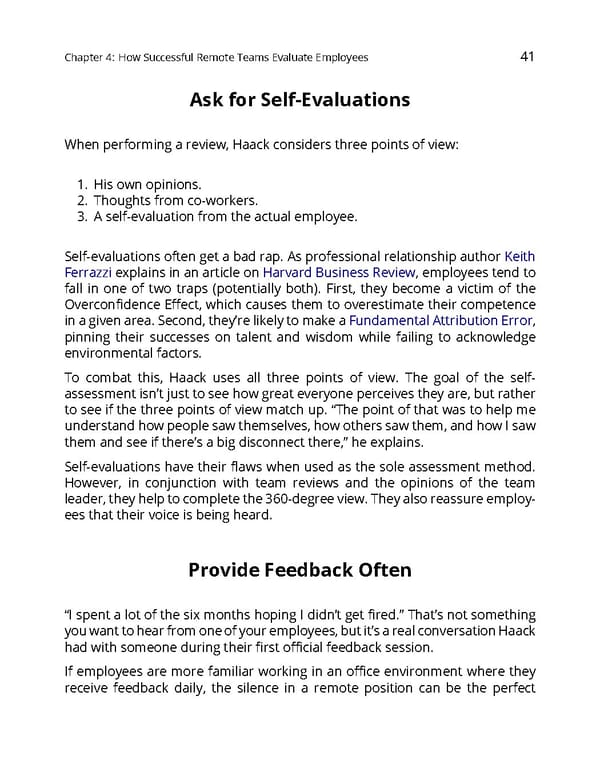Chapter4: HowSuccessfulRemoteTeamsEvaluateEmployees 41 AskforSelf-Evaluations Whenperformingareview,Haackconsidersthreepointsofview: 1. His own opinions. 2. Thoughts from co-workers. 3. A self-evaluation from the actual employee. Self-evaluations often get a bad rap. As professional relationship author Keith Ferrazzi explains in an article on Harvard Business Review, employees tend to fall in one of two traps (potentially both). First, they become a victim of the Overconfidence Effect, which causes them to overestimate their competence in a given area. Second, they’re likely to make a Fundamental Attribution Error, pinning their successes on talent and wisdom while failing to acknowledge environmentalfactors. To combat this, Haack uses all three points of view. The goal of the self- assessmentisn’t just to see how great everyone perceives they are, but rather to see if the three points of view match up. “The point of that was to help me understandhowpeoplesawthemselves,howotherssawthem,andhowIsaw themandseeifthere’sabigdisconnectthere,”heexplains. Self-evaluations have their flaws when used as the sole assessment method. However, in conjunction with team reviews and the opinions of the team leader,theyhelptocompletethe360-degreeview.Theyalsoreassureemploy- eesthattheir voice is being heard. ProvideFeedbackOften “I spent a lot of the six months hoping I didn’t get fired.” That’s not something youwanttohearfromoneofyouremployees,butit’sarealconversationHaack hadwithsomeoneduringtheirfirstofficialfeedbacksession. If employees are more familiar working in an office environment where they receive feedback daily, the silence in a remote position can be the perfect
 The Ultimate Guide to Remote Work Page 44 Page 46
The Ultimate Guide to Remote Work Page 44 Page 46